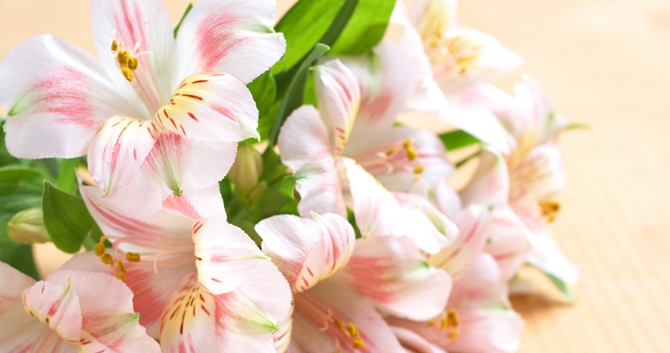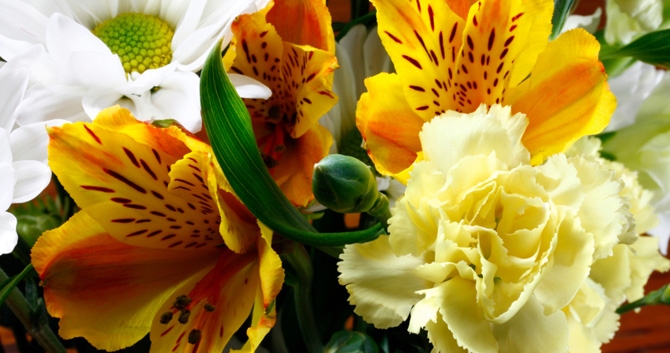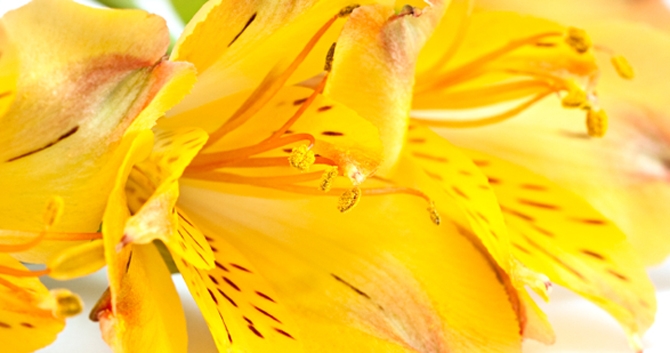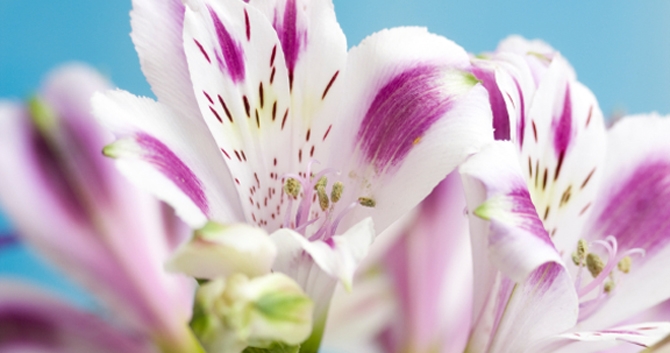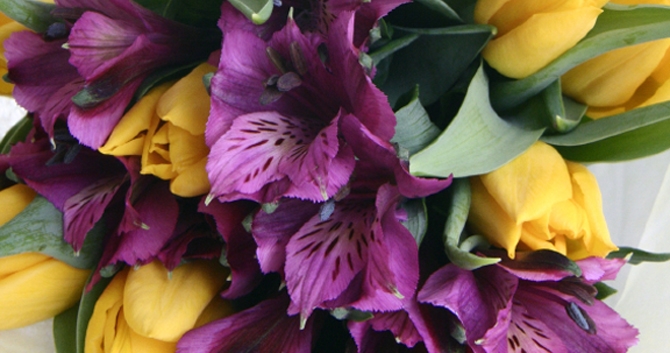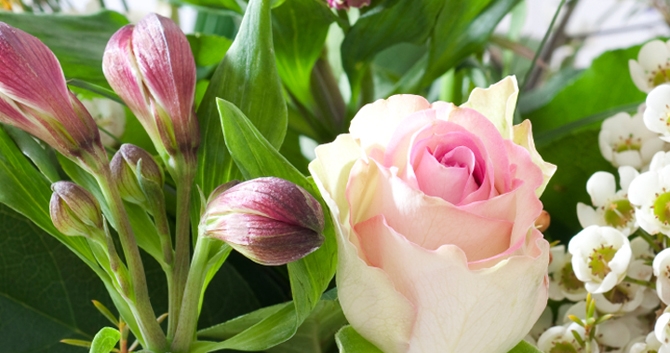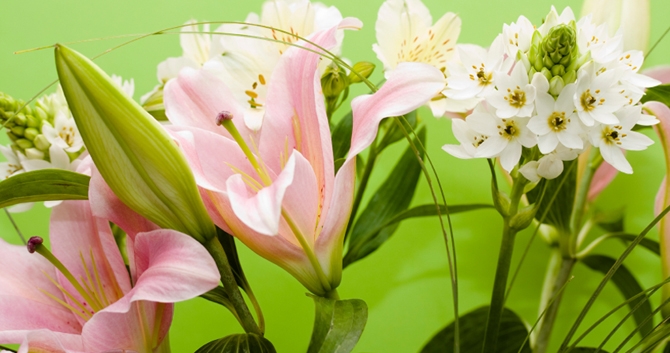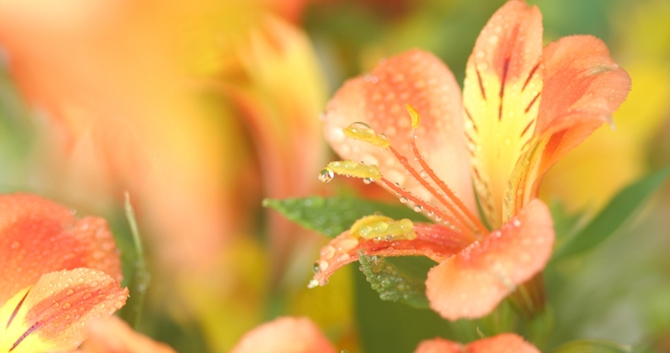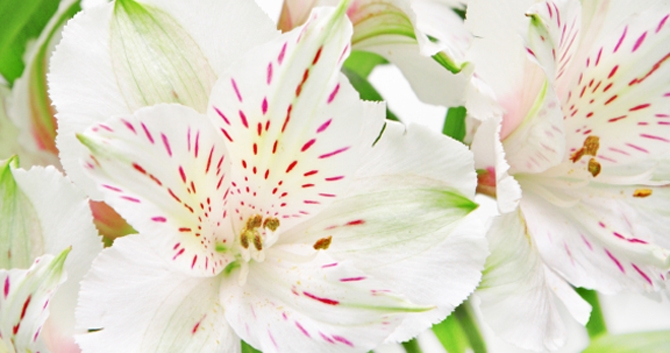Care Tips
When you get home, stand the wrapped flowers in water so they can get a good drink while you're getting the vase ready.
- Fill a vase with water and allow it to come to room temperature. If you are using floral foam, let it soak until it is fully saturated and sinks to the bottom.
- Add a packet of flower food to extend bloom life. If you don't have flower food, dissolve half a teaspoon of sugar, a teaspoon of lemon juice, and a few drops of bleach in 4 cups of water to create a home-made substitute.
- Slant cut the stems to the desired length. Flower stems naturally begin to seal their ends, so cutting them helps the flower to take in fresh clean water and extends their vase life. The shorter the stem the more water will feed the bloom.
- Remove any leaves that will be submerged as these will rot over time.
- Arrange stems to your liking, varying the height and position. Add other flowers to the arrangement once all the alstroemeria are positioned.
- Alstroemeria are thirsty flowers, so check the water frequently and add fresh water to fill the vase.
- Change the water if it starts looking cloudy.
About Alstroemeria
From pure white, blushing pink, or pale apricot to deep magenta, bright red, or vibrant yellow alstroemeria are an indispensable addition to any floral arrangement or bridal bouquet. Their petite lily-shaped blossoms perfectly complement larger, more dramatic flowers like roses, peonies, tulips, and gerberas, subtly adding color or boldly attracting attention. With softly shaded petals streaked with darker hues they also stand on their own, unlike many other cut flowers which need a companion to add contrast.
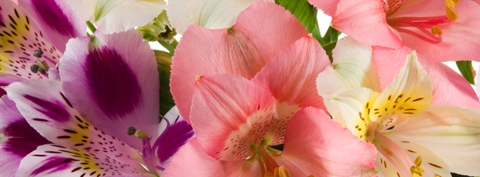 With softly shaded petals streaked with darker hues alstroemeria stand on their own
With softly shaded petals streaked with darker hues alstroemeria stand on their own
While alstroemeria's flowers attract all the attention, it's their leaves that give them meaning. Alstroemeria's spiral growth pattern turns the leaves upside down to face the sun. These unusual leaves have come to symbolize the twists, turns, and growth of friendship. They're often added to bridal bouquets to symbolize the strong bond and future growth of the relationship or sent to friends to show appreciation. They are also the 30th wedding anniversary flower, symbolizing devotion.
Alstroemeria grow wild in the mountains of South America but cultivated varieties are available year-round. Also known as Lily of the Incas or Peruvian Lily, they are actually more closely related to Amaryllis than they are to true lilies. They're long lasting cut flowers that will stay fresh for up to two weeks. To get the most out of alstroemeria stems, look for slightly opened buds just beginning to show color. Once home, flowers will begin to bloom over days with new flowers opening as earlier blooms fade. In a hurry and need blooms quickly? Submerge tight buds in warm water to promote opening.
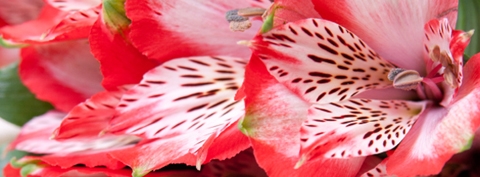 Alstroemeria are thirsty flowers, so check the water frequently
Alstroemeria are thirsty flowers, so check the water frequently
Inspiration
Looking for ideas on flowers that go well with alstroemeria in a floral arrangement? Try the following simple pairings to create the look that works for your décor or event:
Classic
Roses, peonies, and lilacs all go well with alstroemeria. Try creating a monochromatic flower arrangement in subtle hues of purples and violets, or combine soft pinks, salmons, and yellows for a feminine centerpiece.
Seasonal:
For a spring flower bouquet pair alstroemeria with tulips or fragrant hyacinth in shades of pink and purple; bring the summer indoors with alstroemeria and sunflowers or Gerbera daisies in bright reds and yellows; in the fall mix yellow alstroemeria with orange and rust dahlias or mums, adding fall leaves around the arrangement for fullness
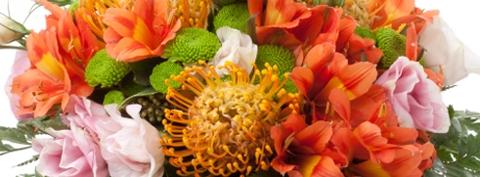 Golden protea, green button mums, and orange alstroemeria pair well with pink lisianthus and foliage
Golden protea, green button mums, and orange alstroemeria pair well with pink lisianthus and foliage
Casual:
Combine alstroemeria with pink, blue or white hydrangea and baby's breath for a cottage flower arrangement reminiscent of a summer beach house.
Bridal:
Create a meaningful bridal bouquet or wedding reception centerpiece that conveys friendship and devotion with white roses and alstroemeria.
Modern:
Mix monochromatic shades of alstroemeria with berries and branches for a flower arrangement. Gather the stems and wrap them just under the flower heads with a large leaf like Aspidistra.
Exotic:
Pair with taller flowers like Asiatic Lilies, bird of paradise, orchids, or lobster claws. Since the proportions of the larger tropical flowers and stems are great by themselves, keep the alstroemeria clusters at the lower portion of the arrangement to give equal interest to both varieties.

